The Ultimate Overview to Hose Barbs: Whatever You Required to Know
The hose barb is often overlooked when it comes to connecting hose tubes and pipes to various devices, pumps and other systems. Although they are not as eye-catching as pumps and hoses themselves, hose bars play a vital role in ensuring the smooth flow of fluids or gases within systems. The purpose of this article is to explore the world of hose bars, including their significance, uses, types, as well as how you can pick the best hose bar for your specific requirements. This comprehensive overview is for everyone, whether you are a DIY enthusiast or an expert in the pipes, automotive, or commercial industry. It will give you all of the information you need to understand hose barbs as well as their applications.
What is a Hose Barb?
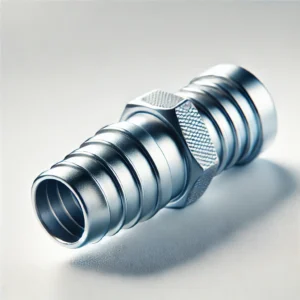
A hose barb is a sort of suitable utilized to attach an adaptable hose to a pipeline, tube, or various other elements. It is usually made from products like brass, stainless-steel, plastic, or light weight aluminum. The layout of a hose barb includes ridges or barbs along the size of the suitable, which hold the internal surface area of the hose, safeguarding it in position and stopping leakages. The link is generally made by pressing the hose over the barb, in some cases with the assistance of a clamp, and after that tightening it,
While hose barb are typically utilized for liquid and gas transfer, they are additionally generally seen in applications such as watering systems, automobile air conditioning systems, and clinical tools.
The Importance of Hose Barbs in Various Industries:
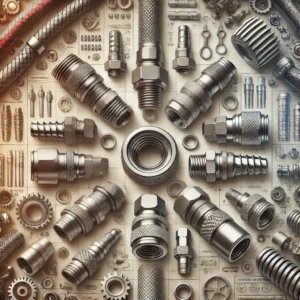
Hose barbs are necessary throughout numerous sectors due to the fact that they give a very easy, efficient, and safe and secure method of attaching pipes and tubes to various other elements. Below’s why they are essential in various markets:
1. Automotive Industry
- In the auto market, hose barb are utilized to link gas lines, a/c systems, radiators, and a lot more. Their reputable efficiency guarantees that vehicle liquids and gases circulation efficiently, making the automobile run effectively.
2. Industrial Applications
- From commercial equipment to chemical handling, hose barbs are utilized to move fluids and gases securely. Whether it’s in a manufacturing facility, research laboratory, or making device, the sturdiness and simpleness of hose barbs make them best for severe commercial settings.
3. Agriculture:
- In agriculture, hose barb are frequently utilized in watering systems. Their strong layout aids link pipes to pumps, lawn sprinklers, and various other watering devices, making sure ideal water circulation to plants and plants.
4. Medical and Healthcare:
- Hose barb are often discovered in clinical tools such as breathing tubes, oxygen containers, and dialysis devices. Their capacity to firmly affix pipes without leakages is crucial in clinical applications where accuracy and security are crucial.
5. Home Plumbing:
- In property pipes, hose barb are utilized to link cleaning devices, dishwashing machines, and outside yard pipes. The adaptability and convenience of setup make them an exceptional selection for home repair services and installments.
Various Types of Hose Barbs:
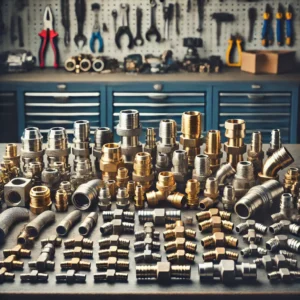
Hose barb been available in a selection of kinds to fit various products, stress degrees, and applications. Comprehending these kinds can assist you make the best selection for your requirements.
1. Straight Hose Barbs:
- Straight hose barb are one of the most typical kind and include a straightforward straight shaft with barbs that leave the size of the suitable. These are normally utilized for low-pressure applications and are best for attaching a hose to a pipeline or tube.
2. Elbow Joint Hose Barbs:
- Arm joint hose barb are developed to transform the instructions of the hose link, generally at a 90-degree angle. These barbs are perfect for scenarios where room is restricted, and you require to make a turn or angle in the hose course.
3. Tee Hose Barbs:
- Tee hose barb have a “T” form, which permits them to branch a hose right into several instructions. This sort of hose barb works when you require to divide a solitary hose right into 2 or even more hose pipes, commonly seen in watering systems or fluid circulation networks.
4. Reducer Hose Barbs:
- Reducer hose barbs are created to link tubes of various dimensions. They have one end with a bigger size and an additional with a smaller sized size, permitting the decrease of circulation in between different-sized tubes or hose pipes.
5. Barbed Couplings:
- Barbed combinings are made to sign up with 2 pipes or tubes with each other. These are frequently made use of when you require to expand the size of a hose, making it possible for a smooth link without the requirement for extra devices or parts.
Read About : Plastic tubing
Products Used for Hose Barbs:
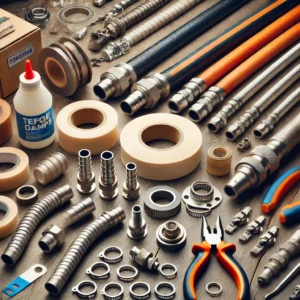
Hose barb can be made from numerous products, and the option of product influences their efficiency, longevity, and resistance to numerous aspects. Below are one of the most usual products utilized:
1. Brass:
- Brass hose barbs are extremely resilient and immune to rust. They are typically utilized in pipes, vehicle, and commercial applications. Brass is a terrific product option for hose barbs that will certainly be subjected to water, air, or gas.
2. Stainless-steel:
- Stainless-steel hose barbs are immune to corrosion and are best for high-pressure applications or settings that entail severe chemicals or severe temperature levels. Stainless-steel is commonly utilized in the food, pharmaceutical, and vehicle markets.
3. Plastic:
- Plastic hose barbs, consisting of PVC, polypropylene, and nylon, are light-weight and immune to rust. They are frequently utilized in sectors such as farming, drugs, and food handling. While plastic hose barbs are much less resilient than steel, they are economical and ideal for low-pressure applications.
4. Light weight aluminum;
- Light weight aluminum hose barbs are recognized for their lightweight and stamina. They are commonly utilized in automobile and commercial applications where an equilibrium in between toughness and weight is called for. Light weight aluminum is likewise immune to deterioration however much less so than stainless-steel.
Exactly how to Choose the Right Hose Barb:
Picking the appropriate hose barb is vital for making sure the durability and effectiveness of your system. Right here are some essential aspects to think about when picking the ideal hose barb for your application:
1. size Compatibility:
- The initial and crucial aspect is guaranteeing that the hose barb works with both the hose and the pipeline or tube it will certainly be affixed to. Action the inner size of the hose and the exterior size of the pipeline or tube to make certain an ideal fit.
2.Material:
- Select a product that fits your application. For instance, if you are taking care of chemicals or heats, choose stainless-steel. If expense is a key issue and the application is much less requiring, plastic could be enough.
3.pressure Rating:
- The stress score of the hose barb is necessary to prevent leakages or damage. Make certain that the hose barb can stand up to the stress in your system, particularly in high-pressure applications like automobile systems or commercial equipment.
4. Temperature level Tolerance:
- Various products have various temperature level resistances. If your system includes warm fluids or gases, guarantee the hose barb is ranked to deal with heats without weakening.
5. Circulation Requirements:
- Take into consideration the circulation price your system needs. Hose barbs can be found in numerous dimensions, and choosing the best dimension guarantees ideal liquid or gas circulation.
Exactly how to Install a Hose Barb:
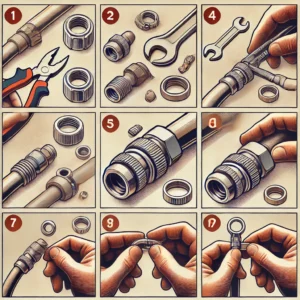
Setting up a hose barb is uncomplicated yet needs mindful interest to guarantee a safe and secure link. Below’s a detailed overview to setting up a hose barb:
Select the Right Size Choose a hose barb that fits the hose and the pipeline or tube you are linking. Prepare the Hose Cut the hose to the needed size, making certain the cut is straight and tidy.
For a tighter fit, you might wish to soften the hose with a little warm, specifically for bigger size pipes. Put the Hose Slide the hose over the hose barb. Press everything the means up until it gets to the shoulder or base of the barb.
Protect with a Clamp For additional safety, make use of a hose clamp to tighten up the hose around the barb. This will certainly stop it from sliding off under stress. Examination for Leaks Once the hose barb is mounted, look for leakages by running the system and trying to find any type of indicators of liquid or gas running away.
Maintenance and Troubleshooting Tips:
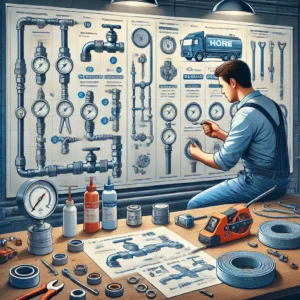
Hose barbs are made to be reduced upkeep, yet normal evaluation can assist expand their life. Below are a couple of suggestions for keeping hose barbs:
Look for Leaks:
- Periodically inspect the hose links to guarantee there are no leakages. Tighten up clamps if essential.
Clean the Hose:
- Over time, particles or build-up might block the hose. Frequently tidy the hose to keep ideal circulation.
Inspect for Wear:
- Hose barbs can break, specifically in high-pressure or high-temperature atmospheres. Change any type of used or broken barbs quickly.
Avoid of Over-tightening:
- When utilizing hose clamps, prevent over-tightening them, as this can harm the hose or the barb.
Final thought:
Hose barbs are straightforward yet vital parts in numerous systems, supplying a dependable method to link pipes and tubes safely. Recognizing the various kinds of hose barbs, products, and installment methods can assist you select the very best one for your certain demands. By taking into consideration aspects such as dimension, product, stress, and circulation price, you can make certain that your hose barb works efficiently and offers its objective properly for many years to find.
Whether you are servicing a DIY task in your home, preserving commercial equipment, or constructing a complicated watering system, hose barbs are crucial. With correct installment and upkeep, hose barbs will certainly remain to maintain your systems running efficiently.